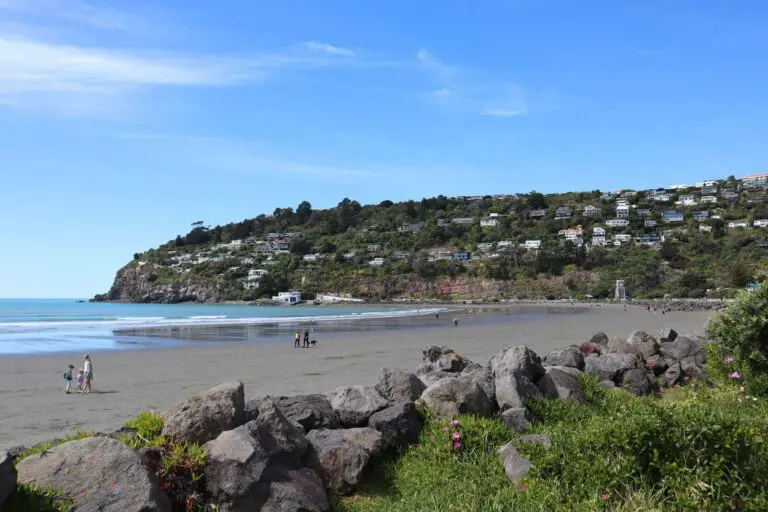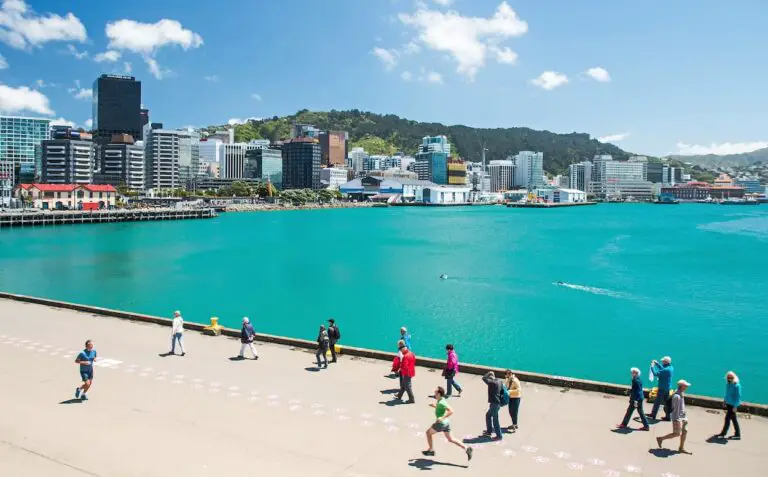Weather And Climate of Auckland: What To Expect?
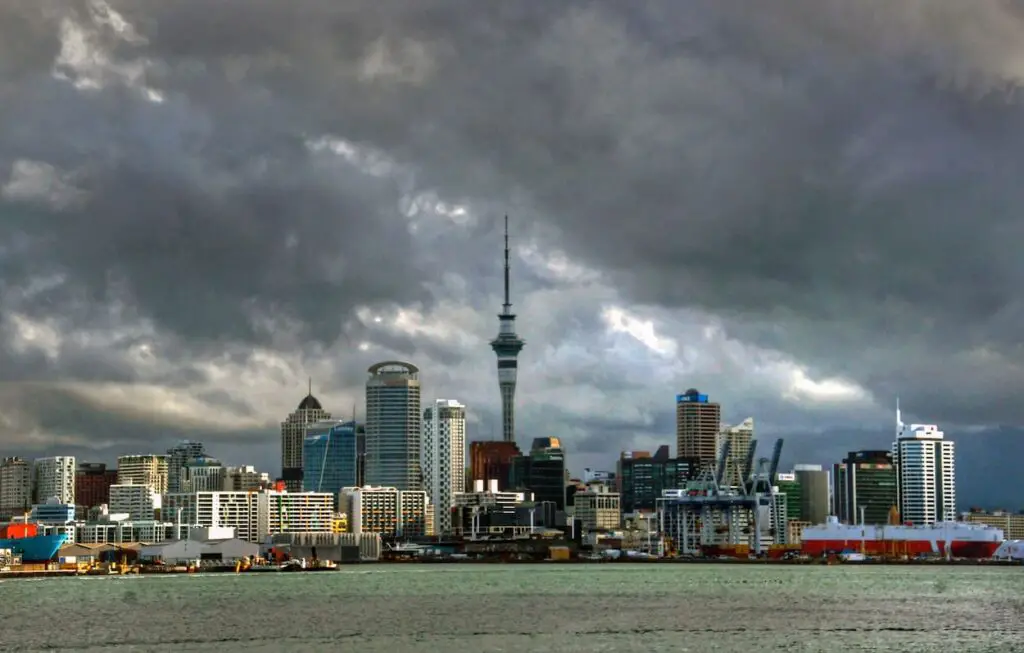
Are you tired of cold weather and considering visiting or moving to Auckland? Well, Auckland isn’t exactly a tropical paradise, but it’s pretty close to it. The climate is subtropical, with warm summers and mild winters. Be aware that Auckland gets a solid amount of rain, where 2023 was an exceptional year.
The weather and climate of Auckland are warm and mild subtropical. With warm and humid summers and mild and wet winters, winds, rain, and clouds are a constant presence throughout the year. The average temperature in the summer is 23°C, while the temperature falls to 14°C in winter. Also, Auckland gets plentiful rain, and annual sunshine hours, however, it doesn’t snow here.
This article is the perfect guide to the climate and weather in Auckland. From the four seasons and the best time to visit Auckland to the clouds, rainfall, sunshine hours, wind, humidity, precipitation, and the average temperature per month — everything has been described in detail.
Also read: Weather and climate in New Zealand vs the UK.
The climate of Auckland
For most people, when visiting or traveling to a new place, the first thought that comes to mind right after popular destination spots is the weather.
In general, the climate of Auckland is mild, with no significant extremes in temperatures. Eastern Auckland is warmer than the Western part of the city.
New Zealand is a small country, yet it has diverse climatic conditions from the far south to the far north. Within North Island, the most populated place and the largest urban city in New Zealand is Auckland.
To put it simply, the climate of Auckland is a subtropical one. With different behaviors in the atmosphere, the climate zone often tends to be comfortably warm throughout much of the year.
Climate includes conditions like clouds, rainfall, hours of sun, wind, and humidity. But, before going into detail about the climatic zone of Auckland, let’s consider the average daily temperatures that you can expect over here.
Average temperatures
The first thing you need to keep in mind is that New Zealand’s weather and climate work in the opposite manner to the general idea of summer from June to August or winter from December to February.
In New Zealand, the summer season is from December to February, and June to August is winter time. The average daily temperature in Auckland in the summer is 23°C, while the temperature falls to 14°C in winter.
Cloudy skies in Auckland follow the course of mild seasonal variations throughout the year. However, it mostly remains cloudy, with clearer skies being a blessing for the Kiwis. It can rain any time in Auckland, regardless of the season.
Clouds appear in the sky somewhere in April and last for 9 months till January. This means most of the winter and autumn go by cloudy. The cloudiest month of the year is June, with an average of 43%, mostly cloudy or overcast sky.
The sky begins to clear up in January and lasts for about 3 months till April. The clearest month of the year is March, with estimates of 63% clear or partly cloudy skies.
The chances of precipitation and rainfall in Auckland go hand in hand.

Precipitation in Auckland is highest around wintertime from May to October. The chance of being a wet day is highest around this time, with the average rainfall being 27% or greater.
This is mainly because of the influence of the surrounding oceans, which helps keep the temperatures less extreme and bring about plenty of rain.
July is the wettest month in Auckland, with an average of 11.3 wet days. This also accounts for the most rain in this month, with an average rainfall of 97 mm.
On the other hand, the dry spell remains from October to May. On average, only 5.3 wet days are experienced, with an average rainfall of only 54 mm in November.
The humidity level depends on precipitation rates, which in turn depends on the hours of sunshine.
During the year, Auckland receives around 2000 hours of sunshine.

Sunshine hours are one of the most liked hours of the day in Auckland. The shortest days with the least sunshine are during June, while the longest days are in December.
Generally, Central and Eastern Auckland receive more bright sunshine than Western and Southern parts of the city and Auckland region. Some places like Waiheke, Little Barrier, and Great Barrier Islands enjoy more sun than average – over 2100 hours per year.
In 2023, the shortest day in Auckland will be June 22, with only 9 hours and 38 minutes of daylight. At the same time, the longest day will be on December 22, with 14 hours and 42 minutes of sun hours.
Humidity is followed in the same months as that of sunshine. The most humid months are from December to February, while the least muggy days in Auckland are from June to September.
Auckland experiences different windy conditions as per the seasonal variations throughout the year.
The windiest month in Auckland is October, with an average wind speed of 24.3 km per hour. Usually, the wind blows at a speed of 22.5 km per hour from May to December.
Whereas in February, the average rate of wind drops to just 20.2 km per hour. From December to May, the calmer time of the year is experienced in Auckland.
One last thing about the climate of Auckland is snowfall. Although New Zealand does get snowfall to such an extent that it is considered a very regular, day-to-day occurrence, however, it doesn’t snow in Auckland!
Snowfall in Auckland is a very rare occurrence and comes as a surprise to most Kiwis. The last time the city had snow was in 2011, and that, too, was after 72 years!
A big relief is that Auckland is blessed with a vast choice of beaches and coastal areas. This helps to maintain the temperature and regulate the water cycle.
You can read more about the climate of Auckland in this guide from NIWA.
Weather in Auckland
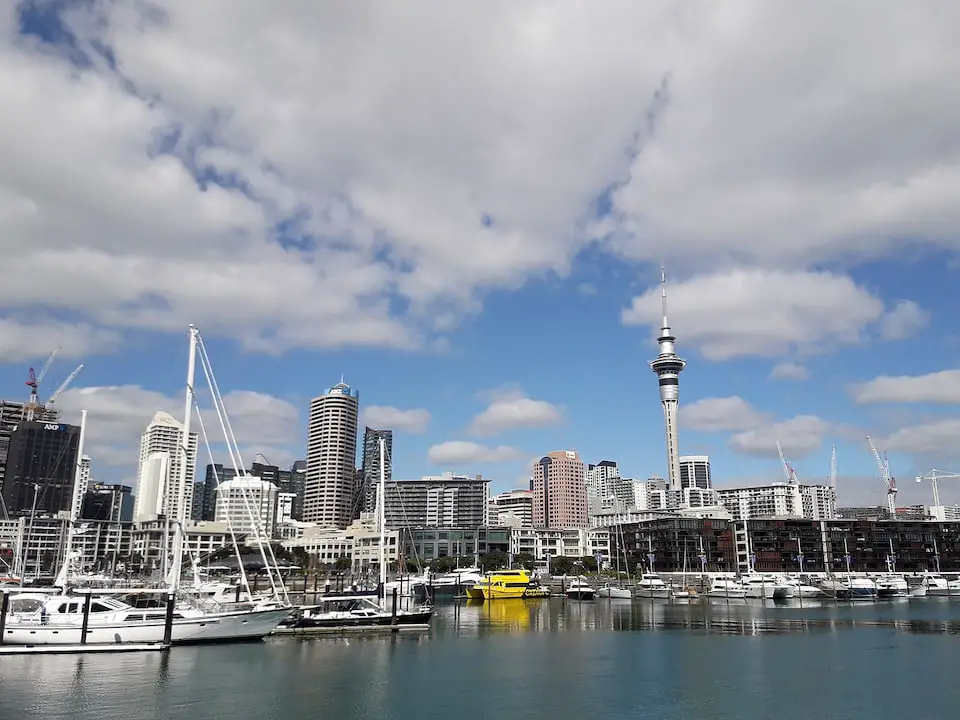
The weather of a place is the atmospheric conditions that last over only a short time. This means weather conditions vary from season to season.
When a commoner thinks of the weather in Auckland, they imagine it to be cold and chilly all year long — which is not right.
The average weather in Auckland throughout the year is mild. With warm summers and mild winters, the region doesn’t experience extremities in temperatures.
First, let’s talk about the average high and low temperatures. The highest average temperature in Auckland is 23°C in the summertime, while the lowest temperature, on average, falls down to 11°C.
The highest temperature recorded in Auckland is 34.0°C at Lincoln Road in west Auckland was on 12 February 2009, and the lowest recorded is -5.7°C at Riverhead Forest recorded in June 1936.
That’s average, though; the real-life temperature is significantly higher, where you will see summer days at almost 30°C.
Also read this guide about weather during the summer in NZ.
Auckland’s weather is subject to a lot of change as the city is influenced by coastal areas, cold fronts, and unexpected cyclones. Yes, the four seasons are experienced by Auckland, and it is worth noting that the seasons officially begin with the start of certain months.
Here is our guide about the seasons of Auckland and what to expect:
Auckland’s spring is from September to November, summer starts from December and lasts till February, autumn or fall is from March to May, and winter is from June to August.
- Spring: September to November (11-19°C)
Spring in Auckland usually starts around September and lasts till October, with average daily temperatures ranging from 13°C to 16°C. This season is featured with a variety ranging from hot sunny days to frosty and chilly mornings.
During this time, everything is full of life and colour. The atmosphere tends to be very fresh and joyous, and the frequent chances of rain make it even better.
If you’re planning on visiting Auckland, springtime is the best time to take your chance. With no humidity and frostbite, this weather has a lot to offer. From sunbathing hours to chilly winds and chances of rain, what more could you ask for?
- Summer: December to February (12°C to 25°C)
It should be no surprise that New Zealand, being a part of the Pacific World, has the opposite summer time to the US. Summers in New Zealand are at the start of December, go on in January, and last till February.
There is no doubt that Auckland’s summer is hot. Average daily temperatures are from 18°C to 20°C, and most days, it gets up to as high as 30°C in the peak summertime.
The only way to beat the heat is to head to the beach, a lake, or a waterpark to cool off. The humidity rates are high, and it seldom rains in summer, with the average amount of rain dropping to 54 mm in late November.
- Autumn: March to May (11-21ºC)
If you’re thinking of visiting Auckland, then another great time is the Autumn season. Autumn in Auckland is like a cottage-core dream come true kind of setting with the perfect weather!
The average daily temperatures range from 18ºC to 14ºC with a constant drop as it gets closer to winter. The weather is a perfect combo of chilly winds and soft sunny hours.
The days get shorter, and nights get colder as it nears winter. The good news is that the chances of rainfall increase, with the average monthly rainfall being 61.8 mm in March to 80.6 mm in May.
- Winter: June to August (7-16ºC)
Auckland’s winters are mild and damp. Finally, the dry spell comes to an end, and heavy rainfall is experienced, with July being the wettest month in Auckland. On average, 11.3 wet days are experienced, with an average rainfall of 85.4 mm.
Average daily temperatures are between 10ºC to 12ºC, and the wind speed of 23 to 24 km per hour. Although Kiwis often become miserable during winter, however, the winters of Auckland aren’t as harsh or extreme as the rest of New Zealand.
When it comes to the best time to visit Auckland, it all comes down to your personal preference. If you like going to the beach or enjoying a soak in the sun, then springtime is the right choice for you. But if you like chilly winds and rainfall with a cup of tea or coffee, then autumn is the best time for you.
Summer and winter are the opposite extremes and not favoured by most people due to undesirable conditions. Summer in Auckland is just way too crowded as all the tourists are crowding the beaches and malls at this time of the year. So, if you plan on visiting, then make sure it’s either in spring or autumn.
The average temperature in Auckland by month
In Auckland, summers tend to be hot and humid, while winters are cold and wet, but one thing that remains year-round is the wind and clouds. The temperature typically varies from 8ºC to 23ºC and rarely ever goes below or above this range.
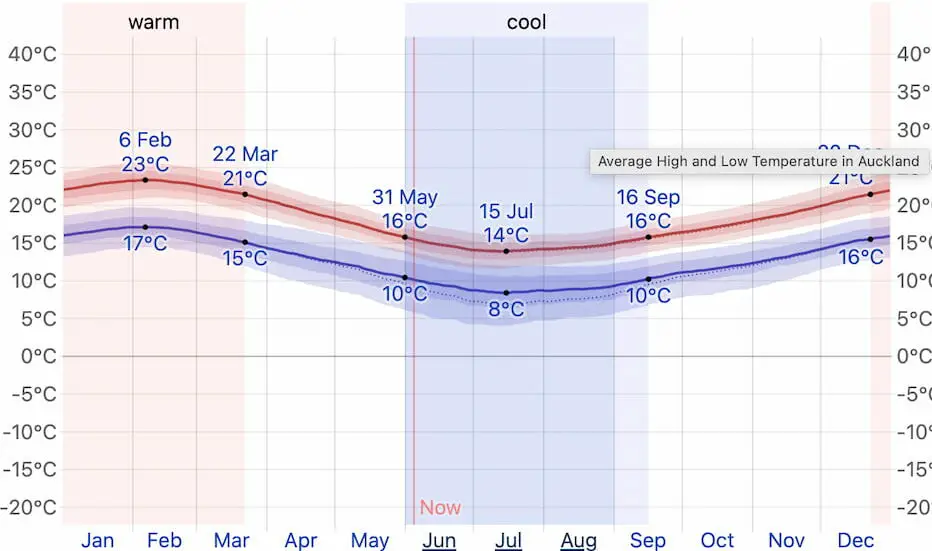
Here is a guide to the average high and low temperatures in Auckland by month:
- January: High to Low: 22ºC to 16ºC
- February: High to Low: 23ºC to 16ºC
- March: High to Low: 21ºC to 15ºC
- April: High to Low: 19ºC to 13ºC
- May: High to Low: 16ºC to 11ºC
- June: High to Low: 15ºC to 9ºC
- July: High to Low: 13ºC to 8ºC
- August: High to Low: 14ºC to 8ºC
- September: High to Low: 15ºC to 10ºC
- October: High to Low: 17ºC to 11ºC
- November: High to Low: 18ºC to 13ºC
- December: High to Low: 21ºC to 15ºC
Source: weatherspark.com
Warm seasons last for three months, from December to February. The hottest month recorded in Auckland’s history is February, with an average high of 23ºC and a low of 16ºC. On the other hand, cooler seasons are from June to August, where the coldest month is July. The average low is 8ºC and goes up to only 13ºC at most.

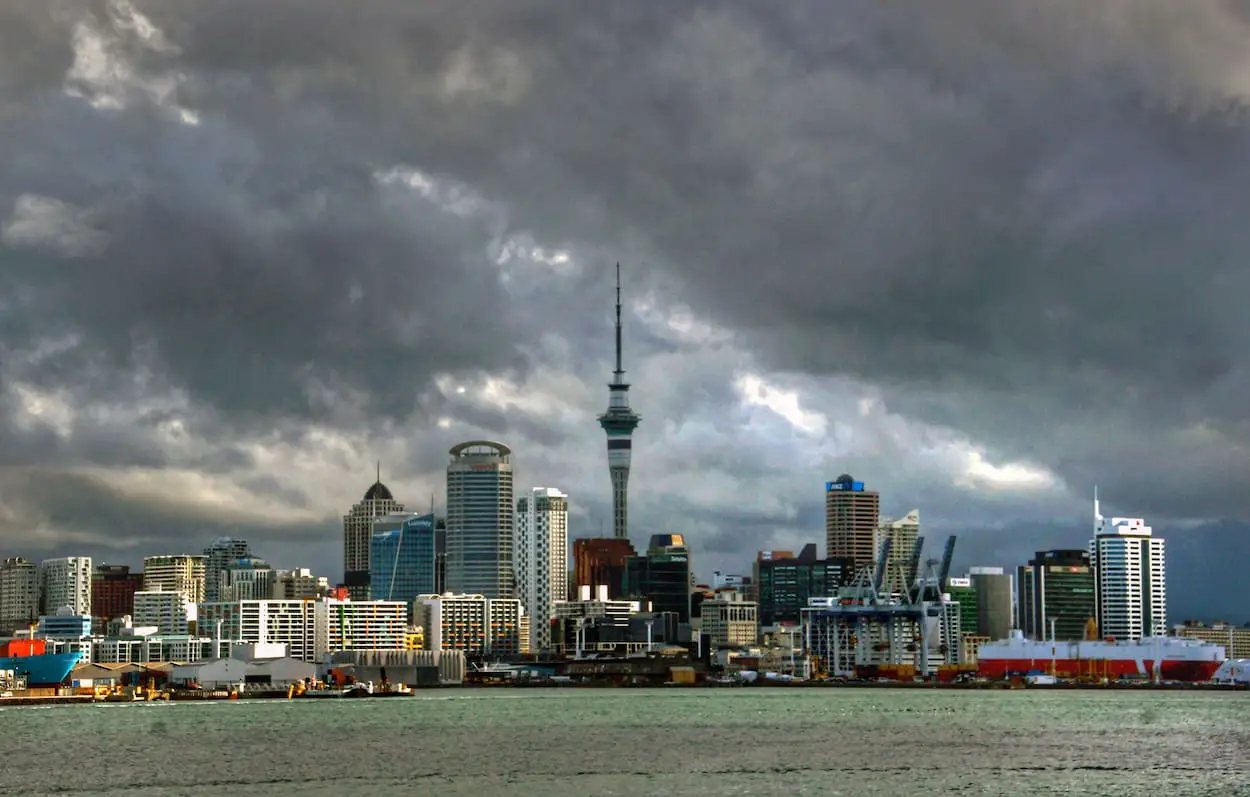
![When Is Halloween in New Zealand And How It’s Celebrated [2023]](https://simplenewzealand.com/wp-content/uploads/2023/08/halloween-768x702.jpg)
